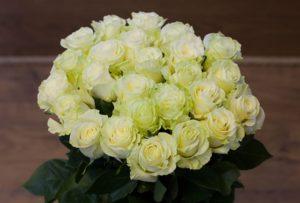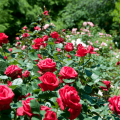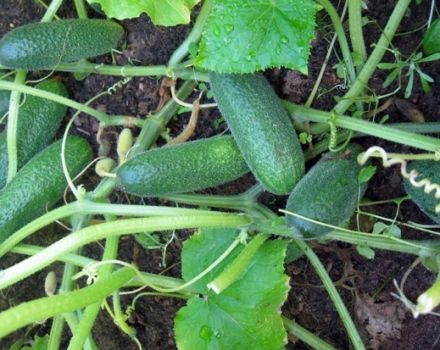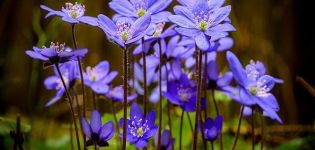Description of the Angela rose, the rules of planting and care at home
Rose floribunda Angela (Angela) is not a rare variety in our area. A lush, spreading bush, strewn with many semi-open and semi-double flowers of a delicate crimson color, will decorate any personal plot. The rose is a light-loving plant; it blooms profusely in the sun. This variety is sensitive to excess moisture, does not like stagnant air and drafts.
Description of the rose
Rose Angela, or Angela, is bred by the breeders of a German company founded by Wilhelm Cordes. A new variety of the floribunda class with pink flowers was registered in 1984.
Appearance
Rose Angela has pink (pale crimson) semi-double and semi-open flowers with a diameter of 6 centimeters. They are collected in lush inflorescences. Each has 5 to 22 flowers, exuding a sweetish fruity aroma. The bush is spreading, 80-150 centimeters high. The leaves are green, matte, 15-17 centimeters long.
Bloom
Angela blooms in the first half of summer. Duration of flowering of one flower - 2 weeks, of a whole inflorescence - 3 weeks. The bush blooms profusely in June, the number of flowers decreases in July. After flowering, rose petals crumble.
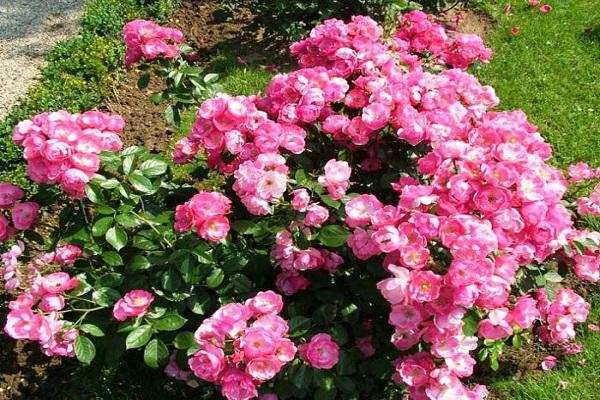
Application in landscape design
Rose Angela is rightfully considered the mistress of flower beds. Its sprawling bush, abundantly strewn with retro flowers, takes center stage in the composition. Angela's use depends on the degree of trimming. It can grow in a lush low bush or have the appearance of a climbing rose, resting on a support.
Advantages and disadvantages of the variety
Floribunda rose advantages:
- excellent winter hardiness;
- resistance to many diseases;
- abundant flowering;
- good adaptation to any weather conditions.
Disadvantages of the variety:
- needs watering in drought;
- for abundant flowering, fertilization is required.
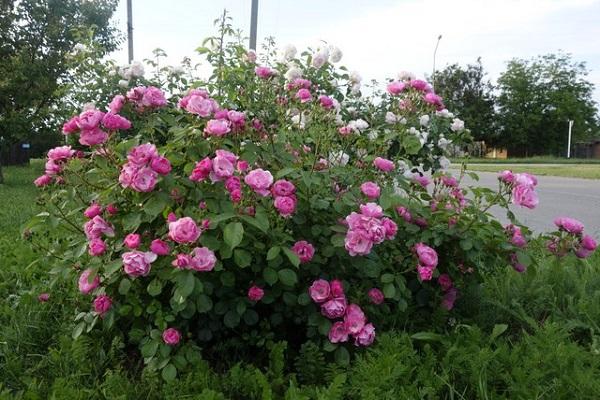
The subtleties of growing roses Angela
The Angela rose can be planted in your garden. It is better to buy seedlings in the spring. The optimal time for planting in a flower bed is the end of May. By this time, the soil should warm up to 10 degrees Celsius. The air temperature should exceed +15 degrees Celsius.
Where to plant
The bush can be planted in the center of the flower bed, on the sides of the garden path, near the house, near the fence. The rose is used for single or group plantings. Angela can grow in an open sunny area and in partial shade. The rose loves the sun, but does not tolerate too swampy soil.
If the place where it will be planted during the rains is flooded with water, the roots of the plant will begin to rot, the rose may disappear.
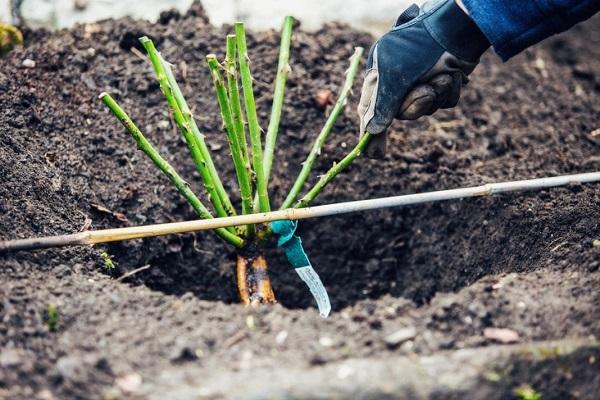
Sapling selection
At the time of purchase, you need to inspect the seedling well. It should have juicy green stems, elastic leaves, healthy roots. Two-year-old seedlings are usually sold that bloom in the year of planting. Before planting the plant in a permanent place, its roots must be dipped in Kornevin's solution for 2 hours.
Site preparation
To plant Angela, you need to dig a hole 0.5 meters deep. The land must be mixed with humus, peat, sand, leafy, sod or garden soil. You can add 300 grams of ash to the soil mixture, a little of the universal fertilizer Kemira Lux.
Planting process
Half of the dug and fertilized soil should be filled back into the hole. A sapling must be installed on top of the mound. Sprinkle its roots with the remaining earth. The root collar may remain above the ground surface. The ground near the plant needs to be lightly tamped. After planting, it is recommended to water the seedling with water (10 liters). Until the plant takes root in a new place, it must be protected from the sun and irrigated.
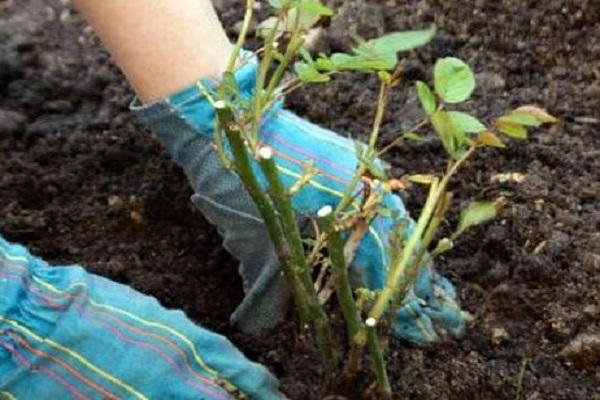
Further care
The Angela variety does not require any special care. It is advisable to water the plant in dry season and feed it with fertilizers several times over the summer.
Lighting
The rose will bloom profusely if planted in an open area under the sun. The plant can grow in partial shade. True, in a heavily shaded place, flowering will be weak.
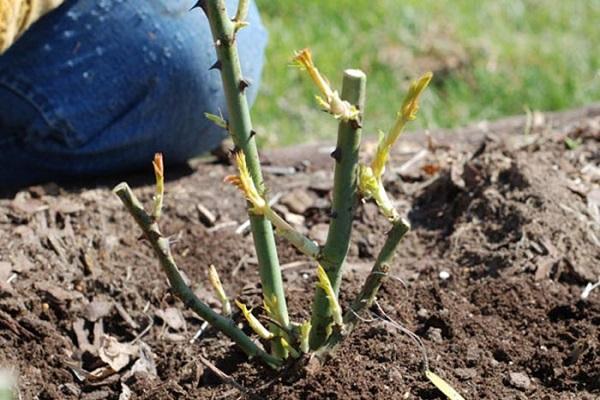
Temperature and humidity
The Angela variety perfectly adapts to any weather conditions. In summer, the plant will bloom in heat and rain. The main thing is that the place where the rose is planted is not flooded with water after rains.
A rose bush is best planted on a hill or on a hill.
Watering and feeding
In dry season, the bush can be watered. For irrigation, take rain or settled water. 2 buckets of water are poured under the bush. The plant must be fed in the warm season at least once a month. At the very beginning of the growing season, nitrogen substances are introduced into the soil. During the budding period, the plant can be fed with potassium and phosphorus. In summer, the rose is fertilized with complex mineral fertilizers (Kemira Universal).
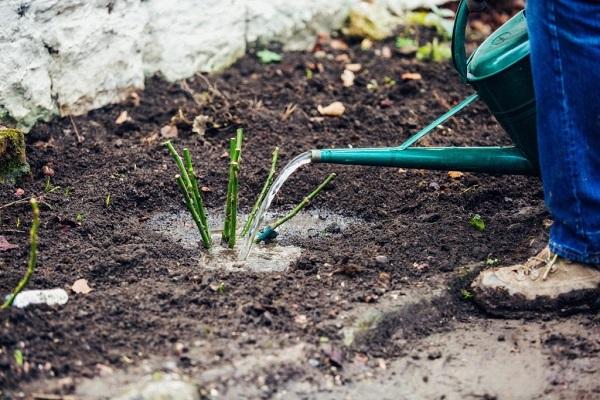
Loosening and mulching
The soil near the rose can be shallowly loosened after each watering. It is important to remember that a rose does not tolerate waterlogging of the soil, and mulch from peat or sawdust will retain moisture. Before wintering, the soil can be mulched with a thick layer of humus.
Pruning
Formative pruning is carried out at the initial stage of plant growth. The Angela variety can be made to look like a lush bush by pinching the growth points on the main shoots. The plant can be turned into a climbing rose, if you leave 2-3 shoots, remove the lower and side branches, allow only the upper ones to develop.
In early spring and late autumn, sanitary pruning is carried out, that is, all weak and broken branches are removed. In summer, flowers that have bloomed are best cut off immediately to stimulate new buds and prolong flowering.
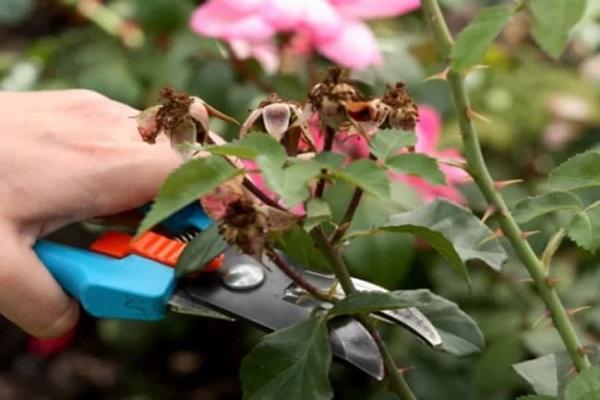
Shelter
Before the onset of frost, the bush can be mulched with a thick layer of humus. This winter-hardy variety is not afraid of frost. True, in northern latitudes, it is better to bend the bush to the ground, lay it on spruce branches and cover it with pine or spruce branches and burlap on top.
Diseases, pests and prevention
This variety has good resistance to many diseases. The rose will not hurt if it is fed on time and not flooded. As a preventive measure, the plant can be treated in early spring with a fungicide solution (Fitosporin-M, Fundazol).
The Angela variety can be attacked by insects (aphids, leaf beetles, spider mites). The plant is saved from pests by treatments with insecticides and acaricides (Fitoverm, Aktellik, Karbofos).

Breeding methods
The Angelica variety reproduces in a vegetative way.For reproduction, woody cuttings 15 cm long are taken. They are cut from the rose at the end of summer, after flowering. The cuttings are rooted in a moist substrate under a transparent flask. Another rose Angela can be propagated by layering. At the beginning of summer, the lignified branch is slightly scratched, bent down and sprinkled with soil. In the place of contact with the ground on the shoot, roots will grow by autumn. It is better to separate the new plant from the mother plant next spring.

